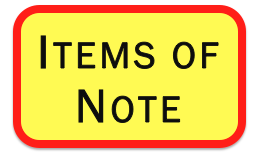In April, the U.S. Congress began consideration of legislation, Trade Promotion Authority (TPA), that would give the President the authority to negotiate international trade agreements. The Bipartisan Congressional Trade Priorities and Accountability Act of 2015, HR 1890 and S 995, authorizes the President to enter into trade agreements with foreign countries to reduce or eliminate tariff or nontariff barriers. The TPA legislation defines U.S. negotiating objectives for such trade agreements. Several apply to government procurement.
The overall trade negotiating objectives established by the legislation include obtaining open, equitable and reciprocal market access for U.S. goods and services, and reducing or eliminating barriers that decrease market opportunities for U.S. exports or otherwise distort U.S. trade.
The TPA legislation also sets out principal trade negotiating objectives in 18 areas: trade in goods, services and agriculture; foreign investment; intellectual property; digital trade in goods and services and cross-border data flows; regulatory practices; state-owned and state-controlled enterprises; localization barriers to trade; labor and the environment; currency; WTO and multilateral trade agreements; trade institution transparency; anti-corruption; dispute settlement and enforcement; trade remedy laws; border taxes; and textile negotiations.
Two areas relate directly to government procurement: WTO and multilateral trade agreements and regulatory practices. Another set, localization barriers to trade, could involve procurement practices.
The negotiating objectives for the WTO and Multilateral Trade Agreements call for enhancing and expanding participation in the WTO Government Procurement Agreement (GPA) and other plurilateral agreements. Currently, the GPA applies to 43 WTO members -- just over one-quarter of the WTO membership; that number will expand to 45 when Montenegro and New Zealand become members this year. China, among others, is engaged in negotiating accession to the GPA.
Another TPA objective is to enhance WTO members' compliance with their obligations through active participation in WTO bodies, including the WTO committee system. That would include the Committee on Government Procurement, which oversees the GPA. A third WTO-related objective is full implementation and extension of coverage of plurilateral agreements to inadequately covered products, sectors and conditions.
A second set of negotiating objectives that applies to government procurement is Regulatory Practices. This relates to the use of government regulation or other practices to reduce market access for U.S. goods, services and investment. The objectives include establishing consultative mechanisms and seeking other commitments to improve regulatory practices through means such as improving transparency in developing guidelines, rules, regulations, and laws for government procurement and other regulatory regimes.
A new negotiating objective that addresses Localization Barriers to Trade could apply to government procurement. Its aim is to eliminate and prevent measures that require U.S. producers and service providers to locate facilities, intellectual property or other assets in a country in order to gain market access or to invest.
In addition to establishing negotiating objectives, the TPA legislation includes consultation and notice requirements for the President to follow during the negotiation process. At the conclusion of the process, Congress must vote the agreement up or down. It cannot amend it.
The President needs TPA in order to complete both the Trans-Pacific Partnership (TPP) with 11 other countries and the Transatlantic Trade and Investment Partnership (TTIP) with the European Union.
Jean Heilman Grier
May 1, 2015
Related Posts
China's 2014 Offer Advances GPA Accession
Progress in Expanding GPA
US Tackles Localization Barriers
WTO Government Procurement Agreement


